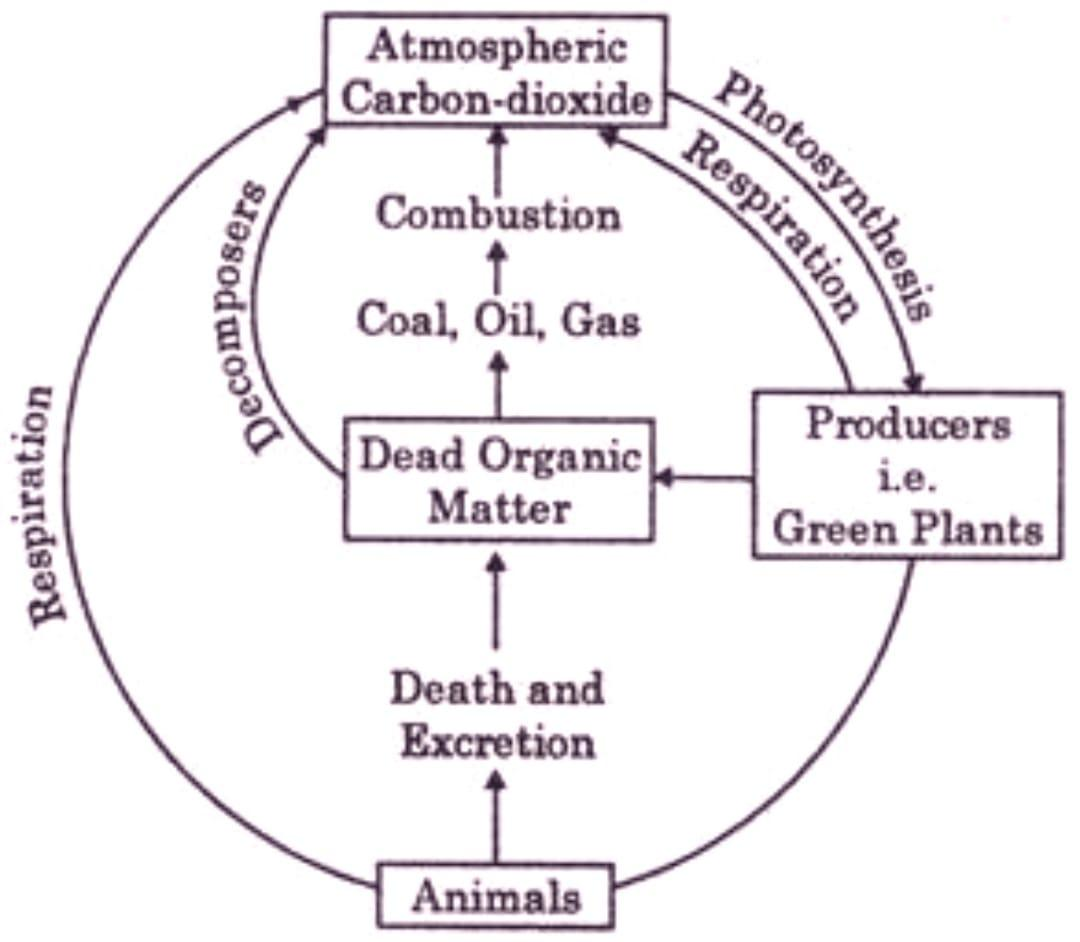
Answer
453k+ views
Hint: The carbon cycle is a gaseous cycle. There is recycling of carbon elements in the atmosphere from abiotic and biotic organisms. The carbon is very abundant and majorly found in dissolved form in oceans.
Complete step by step answer:
-The movement of the nutrients through living and nonliving components is called nutrient cycling. This nutrient cycle associated with the recycling of the carbon is known as carbon cycle.
-The carbon cycle is a gaseous cycle where the reservoir of carbon is in air or water. The carbon constitutes about 49 percent of dry weight of an organism as the body is made up of hydrocarbons. The reservoir of carbon is the oceans where there is carbon. The carbon dioxide released by humans is assimilated by plants when they consume carbon dioxide and release oxygen. This assimilates carbon is returned back to the soil when the plant dies. The carbon is also transferred to soil when animals are dead and is decomposed by microbes.

The main sources of carbon are air, oceans, fossil fuel and rocks.
Note:
The nutrient cycle shows that the elements are recycled and used and neither of the elements are created in the process. This maintains the balance of nutrients in the environment.
Complete step by step answer:
-The movement of the nutrients through living and nonliving components is called nutrient cycling. This nutrient cycle associated with the recycling of the carbon is known as carbon cycle.
-The carbon cycle is a gaseous cycle where the reservoir of carbon is in air or water. The carbon constitutes about 49 percent of dry weight of an organism as the body is made up of hydrocarbons. The reservoir of carbon is the oceans where there is carbon. The carbon dioxide released by humans is assimilated by plants when they consume carbon dioxide and release oxygen. This assimilates carbon is returned back to the soil when the plant dies. The carbon is also transferred to soil when animals are dead and is decomposed by microbes.

The main sources of carbon are air, oceans, fossil fuel and rocks.
Note:
The nutrient cycle shows that the elements are recycled and used and neither of the elements are created in the process. This maintains the balance of nutrients in the environment.
Recently Updated Pages
Who among the following was the religious guru of class 7 social science CBSE

what is the correct chronological order of the following class 10 social science CBSE

Which of the following was not the actual cause for class 10 social science CBSE

Which of the following statements is not correct A class 10 social science CBSE

Which of the following leaders was not present in the class 10 social science CBSE

Garampani Sanctuary is located at A Diphu Assam B Gangtok class 10 social science CBSE

Trending doubts
Derive an expression for drift velocity of free electrons class 12 physics CBSE

Which are the Top 10 Largest Countries of the World?

Write down 5 differences between Ntype and Ptype s class 11 physics CBSE

The energy of a charged conductor is given by the expression class 12 physics CBSE

Fill the blanks with the suitable prepositions 1 The class 9 english CBSE

Derive an expression for electric field intensity due class 12 physics CBSE

How do you graph the function fx 4x class 9 maths CBSE

The Equation xxx + 2 is Satisfied when x is Equal to Class 10 Maths

Derive an expression for electric potential at point class 12 physics CBSE



